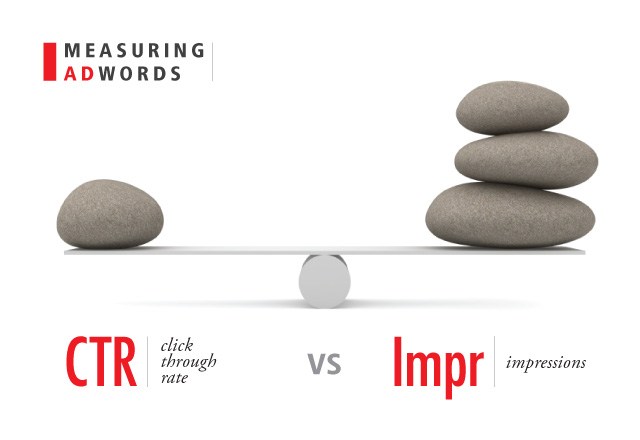
Measuring the success of your AdWords campaign can be an involved process, especially for many B2Bs. When your company doesn't have an e-commerce site or, in many B2B cases, any defined conversion rate (or a conversion rate with a high margin of error), you can't directly calculate Profit by Impression (PBI) or Profit by Clicks (PBC). And naturally, you shouldn't wait for the initiative to end to start tracking performance and measurable ROI. In these instances, your primary goal is likely branding exposure and improved rankings. But how to do you measure its success without those crucial rates?
There are two trains of thought for collecting a usable measurement: CTR and IMPR. But the trick is in using statistical analysis. Here's how to do it to get a better grasp of your campaign's performance.
Your campaign works on multiple levels
One of the most important things to keep in mind when measuring the success of an AdWords campaign is that the campaign runs on multiple levels. Taking any two measures and calculating a rate out of it may not be indicative of the success of the campaign as a whole. Remember to check each metric for the:
- Campaign
- Ad groups
- Placements
- Individual ads
- Keywords
The case for CTR (click through rate)
Quality: Click through rates are particularly useful for measuring the quality of the wording of your ad in terms of call to action and how enticing or interesting your sell is. Carefully monitoring your CTR is helpful for diagnosing specific areas that are lagging behind or for testing new keywords. Likewise, if you have a high CTR, you can measure how relevant your keywords are: keyword relevancy and CTR almost always equal a high quality score for your ad and result in a more successful overall campaign.
In general, your CTR should be above 1%. For testing purposes, your CTR might drop as you collect data about different semantics but it's crucial that it remain above 0.05%. At this point, Google will stop showing your ad.
The case for IMPR (impressions)
Quantity: Impressions are a fantastic measurement for the sheer amount of traffic potential an ad has. With this number and a little research, you can gather a fair estimate for how much of a "market share" your ad has on the term. Similarly, if your impression count is particularly high for an ad, you probably have a high quality score. More importantly, your number of impressions help you measure your reach and frequency, key factors in any branding campaign.
How IMPR:CTR is a better metric
Often for B2Bs, the number of impressions is less important than its relationship to CTR: if your impressions far exceed your CTR, refinement of your ad is necessary. For instance, if you've proven that your ad can reach 10,000 impressions with a CTR of 2.5%, by considering the impressions to be 100%, you can create an "ideal" ratio. This is the true usefulness of the number; through it you can gather if your ad is living up to its potential and can collect statistical data against which you can objectively measure individual ads success. It's that simple.
As when collecting any data for statistical analysis, be sure to collect the largest data sample possible on as many levels as possible to minimize errors caused by outliers. And, as always, measure frequently!
